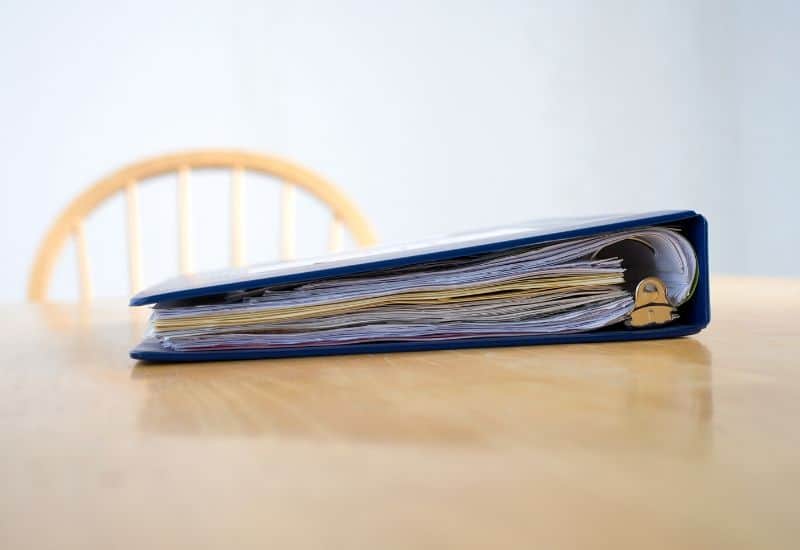W hen a musical theatre audition requests you have a prepared musical theatre song with sheet music (which, in my experience, most do!), the sheet music must be well presented—this shows your professionalism and, more importantly, ensures your accompanist has the best chance of following you easily and successfully.
An incredibly common mistake I see at auditions is an auditioner bringing in their “Audition Song for Teens Compilation” book and handing it to the pianist. The pianist proceeds to hold the book, try to break the spine, fail, and ask the auditioner if they have an unbound copy of the music.
Don’t be that auditioner whose sheet music is impossible to hold on the piano or read. It doesn’t make a super great impression . . .
To ensure your binder is assembled with everything you need, read these quick tips!
1. Ensure Your Binder is Functional and in Good Condition
- Making sure the color and markings on your binder are appropriate is an easy place to start! You want your binder clean of any dust, scribbles, or strange pictures or symbols.
Black, white, or dark navy blue are considered the most professional. I think other darker solid colors like purple might look nice too! I choose black because it keeps my binder looking sharp even if it is a little older. That leads me to my next tip…
- Don’t show up with a binder that is falling apart! That goes for the cardboard, all plastic, or metal rings inside. If your taped up binder rings keep the pianist from flipping your sheet music to the next page, it could cause them to stop entirely!

2. Sheet Protectors
- Putting your music pages in sheet protectors is a great way to keep it clean, crisp, and easy to turn. If you slide the sheets of paper into one protector blank page to blank, you won’t even need a double-sided printer.
- Make sure the sheet protectors you use are not too shiny. Go into any room with lights and move the protector forward and back underneath. If parts of the music are obscured by the shine, they might not be the best option. You don’t want your accompanist to have to fight the glare on your music to read it.
If you don’t want to buy sheet protectors, you can staple or tape the top and bottom edge . . . but I really prefer how clean sheet protectors look!
3. Music Is In Order
- Double-check that you have all the music of your cut in the correct order. I’ve got a post that explains how to choose an audition cut + how to mark your sheet music.
- As I mentioned earlier, if your music is in a compilation with a lot of sheet music, make sure the binding is already cracked or better yet stays unclosed by itself. The pianist shouldn’t have to focus on holding your book open while sightreading music with you!
4. Backup Song & Table of Contents
- For every audition, I suggest having one other song in a different ‘feel’ than your current audition song. For example, if you have an upbeat audition song, bring a prepared contrasting song (in this case ballad) that still fits the style of the show and character you want to suggest with your performance.
- If you’d like to keep all of your prepared audition cuts in your binder (aka a repertoire or “rep” book), I suggest typing up a table of contents so you can easily find the sheet music for whatever song you are looking for. I always pull my primary audition material from whatever section it is in and put it in the front!
Final thoughts, your preparation will show! If the directors see that you’ve prepared your audition binder, it illustrates to them you are professional and put some thought into your audition (just like wearing the appropriate clothing will).
Please comment with any binder questions and feel free to share any ways you personalize your audition binder!
Break a leg!
Grace
